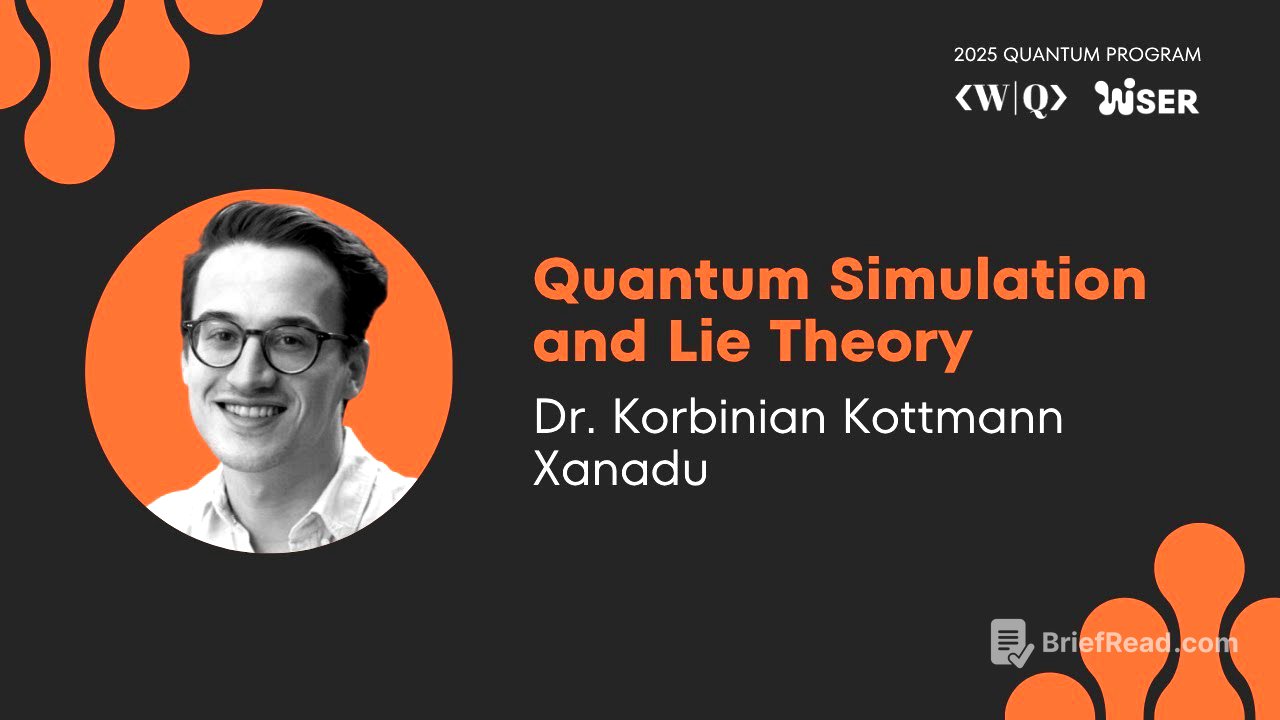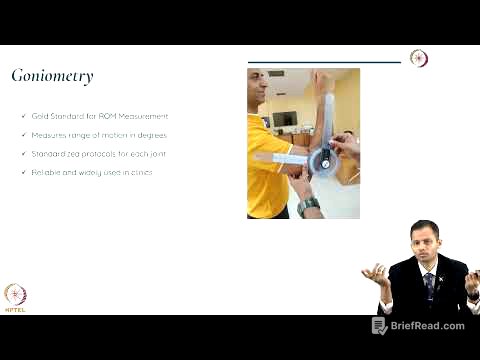TLDR;
This video features Dr. Corbinian Kotman from Xanadu discussing the application of Lie theory in quantum simulation and quantum computing. The talk covers fundamental concepts of Lie theory, including Lie groups, Lie algebras, commutators, and the exponential map, and their relevance to quantum circuits and observables. It also explores advanced topics such as structure constants, the adjoint identity, GSIM (Lie algebra simulation), Cartan decomposition, and unitary synthesis.
- Lie theory provides a fresh perspective on quantum computing concepts.
- GSIM offers a novel approach to classical simulation with theoretical implications for barren plateaus.
- Cartan decomposition enables fixed-depth Hamiltonian simulation and unitary synthesis.
Introduction [0:00]
Dr. Corbinian Kotman from Xanadu discusses quantum simulation and Lie theory, emphasizing the increasing relevance of Lie theory in quantum computing. He highlights Penny Lane, Xanadu's open-source software, as a tool for implementing these concepts, noting its continuously updated demonstrations that help users learn and code mathematical and physical concepts.
Lie Theory 101 [3:49]
The discussion begins with the basics of Lie theory in the context of quantum computing, relating it to familiar concepts like unitary gates, Hermitian operators, Lie groups, and Lie algebras. Unitary matrices and Hermitian matrices form the Lie group and Lie algebra, respectively, connected by the exponential map. The Pauli operators are unique as they are both Hermitian and unitary. A Lie algebra is a vector space of linear operators equipped with a commutator, requiring closure under commutation.
Expressiveness of Quantum Circuits [10:26]
Quantum circuits are composed of unitary gates generated by Pauli operators. By examining the generators and computing the Lie closure, one can determine the expressiveness of the quantum circuit. These generators often form the special orthogonal group, one of three important semi-simple algebras in quantum computing, alongside the unitary and symplectic groups.
Classical Simulation Method [12:52]
The classical simulation method involves operators forming a Lie algebra and the use of structure constants, which fully describe the Lie algebras. These constants inform the adjoint identity, detailing how operators transform under group elements. This leads to GSIM (Lie algebra simulation), which performs simulations using matrices and vectors sized to the dimension of the Lie algebra, potentially smaller than the Hilbert space.
Barren Plateaus and GSIM [20:15]
The discussion shifts to the implications of Lie algebras for barren plateaus in variational quantum algorithms. The expectation value of the gradient is inversely proportional to the dimension of the Lie algebra, as highlighted in the 2023 paper "Adjoint is All You Need." Polynomial scaling of the Lie algebra dimension avoids barren plateaus, while exponential scaling leads to them. GSIM is effective when the Lie algebra dimension scales polynomially, but it is limited to expectation values and does not address sampling.
Quantum Simulation on a Quantum Computer [23:51]
The possibility of performing GSIM on a quantum computer is explored, referencing a paper (arXiv:2407) and a related demo. This involves defining a shadow state, encoding expectation values, and using a shadow Hamiltonian derived from the original Hamiltonian projected onto the Lie algebra basis. This method, termed shadow Hamiltonian simulation, differs from typical quantum simulation setups as expectation values become amplitudes of the state.
Lie Theory in Quantum Compilation [25:41]
Lie theory's application in quantum compilation, specifically translating classical descriptions into quantum circuits, is discussed. This is divided into fixed-depth Hamiltonian simulation via Cartan decomposition and unitary synthesis.
Fixed Depth Hamiltonian Simulation [26:17]
Cartan decomposition involves splitting a Lie algebra into a sub-algebra (K) and its orthogonal complement (M), with K having reductive and symmetric properties. Further decomposing M leads to an Abelian Cartan sub-algebra. This informs the KAK decomposition on a Hamiltonian level, enabling the writing of a Hamiltonian as a product of unitary operators. This decomposition allows for "fast forwarding," where time evolution can be achieved with fixed-depth circuits, though it is limited to systems with small Lie algebras.
Unitary Synthesis [31:06]
The problem of unitary synthesis, translating a unitary matrix into a quantum circuit, is addressed. Standard methods like quantum Shannon decomposition, Kesa Glazer decomposition, and block set xxx decomposition can be uniformly described as recursive Cartan decompositions. These methods involve recursively decomposing a unitary matrix using A3 decompositions, reducing the cubit count until only single-cubit unitaries remain.
Conclusion [33:31]
The presentation concludes by reiterating that familiar quantum computing objects form Lie groups and Lie algebras connected by the exponential map. The speaker encourages further exploration of the demos and papers mentioned for a deeper understanding of these concepts.









